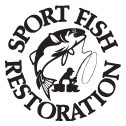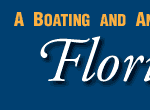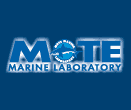CONTACT US:
Florida Fish and Wildlife
Conservation Commission
Fish and Wildlife
Research Institute
100 Eighth Avenue SE
St. Petersburg, Florida 33701
727-896-8626
|
|
|
Mote Marine Laboratory
Tropical Research Laboratory
24244 Overseas Hwy.
Summerland Key, FL 33042
305-745-2729
|
|
|

|
|
This project was funded in part by a grant awarded from Mote Marine Laboratory's Protect Our Reefs Grants Program, which is funded by proceeds from the sale of the Protect Our Reefs specialty license plate. Learn more at .
|

|
|
Additional funding for this project was obtained through the Federal Aid in Sport Fish Restoration Fund.
|
|
|
 |
Simply put, aquatic preserves protect the living waters of Florida to ensure that they will always be home for breeding birds, fish nurseries, freshwater springs, salt marshes, seagrass meadows, and mangrove forests.
In 1975, with growing appreciation for their environmental diversity and alluring beauty, Florida enacted the Aquatic Preserve Act, bringing existing preserves under a standard set of management criteria. This ensured that aquatic preserves' natural condition ... "their aesthetic, biological, and scientific values may endure for the enjoyment of future generations."
Today, Florida is fortunate to have 41 aquatic preserves, encompassing almost two million acres. The Florida Department of Environmental Protection's Office of Coastal and Aquatic Managed Areas oversees the management of these aquatic preserves, as well as three National Estuarine Research Reserves (NERR), one National Marine Sanctuary and the Coral Reef Conservation Program. The Florida Keys is home to two aquatic preserves: Coupon Bight and Lignumvitae Key.
For more information about Florida's aquatic preserves, please visit Florida's Aquatic Preserves.
|
Coupon Bight Aquatic Preserve
Coupon Bight Aquatic Preserve was established in 1969. It is located on the southern shore of Big Pine Key and encompasses 6,000 acres of seagrass meadows, hard bottom communities, mangrove wetlands and coral patch reefs.
|
Lignumvitae Key Aquatic Preserve
Lignumvitae Key Aquatic Preserve encompasses 7,500 acres of seagrass meadows, deep water channels and hard bottom communities offshore of Upper and Lower Matecumbe Keys. Portions of this aquatic preserve are jointly managed as part of the Lignumvitae Key Botanical State Park.
|
|
If you are out snorkeling, diving, fishing, paddling, or boating and see anything that may be unusual or out of the ordinary (including lionfish) in the waters around the Keys , please record the location, date, and time, and contact the Marine Ecosystem Event Response and Assessment (MEERA) project. They can be reached by phone (305-395-8730), e-mail, or online.
If you have any questions, comments, or suggestions about this Web site, please e-mail us at Boating_Guides@MyFWC.com.
Would you like to receive notices of changes to this Web site and the Boating and Angling Guides to the Upper, Middle, or Lower Keys? If so, please e-mail us and include SUBSCRIBE-KEYS in the subject line.
|






















